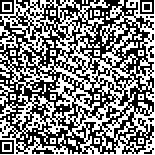| 摘要: |
| [摘要] 目的 探讨不同手术方式对治疗子宫肌瘤所产生的对机体氧化应激和免疫功能的影响,为将来子宫肌瘤的治疗提供手术依据。方法 选取2016-04~2017-02该院收治的100例子宫肌瘤患者,根据手术方式不同分为LM组40例,TCRM组30例,AM组30例,分别进行腹腔镜子宫肌瘤剔除术(laparoscopic myomectomy,LM)、宫腔镜子宫肌瘤电切术(transcervical resection of myoma,TCRM)及开腹肌瘤剔除术(Abdominal Myomectomy,AM)。比较手术2个月后三组的机体氧化应激程度和免疫功能状况。结果 LM组和TCRM组患者的机体氧化应激指标中单核细胞趋化蛋白-l(MCP-1)以及活化调节因子(RANTES)明显要比AM组低,差异有统计学意义(P<0.05)。LM组和TCRM组中的免疫球蛋白IgM、IgA、IgG均明显高于AM组,差异具有统计学意义(P<0.05)。结论 采用腹腔镜下的子宫肌瘤剔除术和宫腔镜子宫肌瘤电切术比采用开腹子宫肌瘤剔除术所引起的机体氧化应激程度更低,免疫功能影响更小,更利于术后恢复,值得临床推广。 |
| 关键词: 子宫肌瘤 氧化应激 免疫功能 手术方式 |
| DOI:10.3969/j.issn.1674-3806.2018.02.05 |
| 分类号:R 737.33 |
| 基金项目:阳江市卫生和计划生育局科技计划项目(编号:阳卫计2016-006) |
|
| Effects of different surgical methods on oxidative stress and immune function of uterine fibroids |
|
LIANG Wei-yan
|
|
Department of Gynecology and Obstetrics, the People′s Hospital of Yangdong District, Yangjiang City, Guangdong 529500, China
|
| Abstract: |
| [Abstract] Objective To explore the effects of different surgical methods on the treatment of oxidative stress and immune function in uterine fibroids, and to provide a basis for future treatment of uterine fibroids.Methods 100 patients with uterine fibroids were collected in our hospital from April 2016 to February 2017, and were divided into the LM group(laparoscopic myomectomy), the TCRM group(transcervical resection of myoma) and the AM group(abdominal myomectomy) according to the different surgical methods. The oxidative stress and immune function were compared among the three groups two months after the treatment.Results The body monocyte chemotactic protein in oxidative stress indicators - l(MCP - 1) and activation adjustment factor(RANTES) in the LM group and the TCRM were obviously lower than those in the AM group(P<0.05). In addition, the immunoglobulin IgM, IgA and IgG in the LM group and the TCRM group were significantly higher than those in the AM group(P<0.05).Conclusion Laparoscopic myomectomy and transcervical resection result in less oxidative stress and less impact on immune function and more suitable for removing uterine fibroids than abdominal myomectomy. |
| Key words: Uterine fibroids Oxidative stress Immune function Operation methods |

